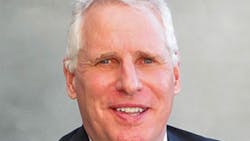When you look at the growth numbers for cities like Boston, New York, Houston, Dallas, Austin, Raleigh, San Francisco and Washington, D.C., you realize just how fast they are growing compared to other U.S. cities.
These cities aren’t growing fast just because they happen to be among the biggest in the United States when measured by growth in population or GDP. From what I have seen in my research for this year’s Market Planning Guide, it’s much more likely they have a perfect economic storm working for them, with some powerful economic drivers creating a terrific business environment. Let’s take a look at three of the biggest drivers.
Business flowing in from the often-mentioned Energy Renaissance. Houston comes to mind first here. The city ranks among the leaders in population growth, residential construction, Gross Metropolitan Product (GMP), and large construction projects underway and on the drawing boards in large part because its impact on the global oil and gas industry is unsurpassed in the United States.
By sheer numbers, Houston ranks #1 in energy-related business, but you can’t overlook what’s happening elsewhere along Gulf Coast, particularly in Louisiana. According to an article in the Times-Picayune, “Louisiana is benefiting from a building boom in the petrochemical industry. More than $103 billion worth of oil-related projects have been completed, are underway or will start soon. Baton Rouge, Lafayette, Lake Charles and Houma stand to benefit the most. Louisiana’s Economic Outlook projects the state will add 34,100 jobs in 2015 and another 32,600 in 2016.”
Corridors of commerce. Billions of dollars worth of construction is now underway in many of the nation’s port cities as they dredge their harbors, retrofit their piers, and install bigger cranes to welcome the newest container ships, which are much larger than any vessels now sailing. For instance, the Maersk Triple E Class ships, with their 18,000 TEU (twenty-foot container) capacity, hold 16% more cargo (2,500 additional containers) than the largest vessels now sailing. Long Beach, Calif., has a big expansion project underway to handle ships of this size and a Wall Street Journal article says ten of the largest East Coast and Gulf Coast ports in the U.S. have $11 billion in expansion projects underway or on the drawing boards.
Tech hiring is supporting new office construction. As we discuss in the 2015 Market Planning Guide on page 16, hiring by technology firms in computers, biotechnology and other industries has had a tremendous impact on overall hiring for the U.S. economy.
CBRE Research has a fascinating report that explores this trend. According to its Sept. 2013 report, “U.S. Tech-Twenty: Measuring Office Market Impact,” “These firms have added jobs five times faster than the national average, producing 366,000 new high-tech services jobs at a 17.4% growth rate, while total nonfarm jobs in the U.S. grew 3.4%, both between 2009 and mid-2013. Moreover, the high-tech services sector was responsible for one out of every four new office-using jobs.”
Some cities registered truly incredible growth in tech jobs between 2011-2013, according to the report. CBRE said the cities logging the largest percent increases were San Francisco (+61%); Austin (+30%); New York (+29%); and Chicago (+20%). This hiring trend has a direct impact on the electrical wholesaling industry because of the importance of the office market segment. According to new Market Mix data collected for this year’s Market Planning Guide, construction and renovation of offices accounts for 18.7% percent of all electrical products sold through electrical distributors.
While it’s not uncommon for a city to make one of the many “Top 10 in growth” lists one year and not be ranked the next, I believe any metropolitan area benefiting from at least one of the economic drivers discussed here should enjoy a healthy economy over the next few years.
About the Author
Jim Lucy
Editor-in-Chief of Electrical Wholesaling and Electrical Marketing
Jim Lucy has been wandering through the electrical market for more than 40 years, most of the time as an editor for Electrical Wholesaling and Electrical Marketing newsletter, and as a contributing writer for EC&M magazine During that time he and the editorial team for the publications have won numerous national awards for their coverage of the electrical business. He showed an early interest in electricity, when as a youth he had an idea for a hot dog cooker. Unfortunately, the first crude prototype malfunctioned and the arc nearly blew him out of his parents' basement.
Before becoming an editor for Electrical Wholesaling and Electrical Marketing, he earned a BA degree in journalism and a MA in communications from Glassboro State College, Glassboro, NJ., which is formerly best known as the site of the 1967 summit meeting between President Lyndon Johnson and Russian Premier Aleksei Nikolayevich Kosygin, and now best known as the New Jersey state college that changed its name in 1992 to Rowan University because of a generous $100 million donation by N.J. zillionaire industrialist Henry Rowan. Jim is a Brooklyn-born Jersey Guy happily transplanted with his wife and three sons in the fertile plains of Kansas for the past 30 years.
